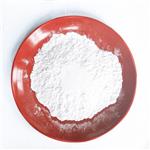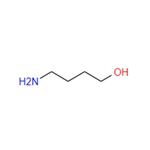4-Amino-1-butanol (4AB) is an important pharmaceutical intermediate compound and a precursor of biodegradable polymers for gene delivery. It can be used in organic synthesis and biological properties studies, among others. In addition, 4-Amino-1-butanol (4AB) has been shown to have a higher CO2 solubility than 2-amino-1-ethanol (MEA), which is potentially useful in solving problems related to flue gas purification[1-2].
Very light clear yellow liquid
4-Amino-1-butanol was used:
- As a linker in the synthesis of highly branched poly(β-amino esters)(HPAEs) for gene delivery.
- As a side chain to modulate antimicrobial and hemolytic activities of copolymers.
- In the total synthesis of (+)-fawcettimine,(+)-fawcettidine, and (?)-lycojapodine A.
4-Amino-1-butanol is a useful intermediate in a variety of organic synthesis. It is mainly used in personal-care products, preparation of water soluble cationic flocculants and ion exchange resins as well as in the preparation of beta-lactam antibiotics. It is used for the production of efficient anionic emulsifiers, nonionic polyethylene emulsions, water treatment, metal treatment and absorption of carbon dioxide gas. It is used as a pigment dispersion aid and curing agent in selected textile -resins.
4-Amino-1-butanol (4AB) can be prepared by microbiological methods. we report for the first time the fermentative production of 4AB from glucose by metabolically engineered Corynebacterium glutamicum harboring a newly designed pathway comprising a putrescine (PUT) aminotransferase (encoded by ygjG) and an aldehyde dehydrogenase (encoded by yqhD) from Escherichia coli, which convert PUT to 4AB. Application of several metabolic engineering strategies such as fine-tuning the expression levels of ygjG and yqhD, eliminating competing pathways, and optimizing culture condition further improved 4AB production. Fed-batch culture of the final metabolically engineered C. glutamicum strain produced 24.7?g/L of 4AB[1].
[1] CINDY PRICILIA SURYA PRABOWO. Microbial production of 4-amino-1-butanol, a four-carbon amino alcohol[J]. Biotechnology and Bioengineering, 2020. DOI:10.1002/bit.27438.
[2] ZULKIFLI IDRIS . Equilibrium solubility of carbon dioxide in aqueous solutions of 3-amino-1-propanol, 4-amino-1-butanol and 5-amino-1-pentanol at low partial pressures[J]. Fluid Phase Equilibria, 2015. DOI:10.1016/j.fluid.2014.11.028.



